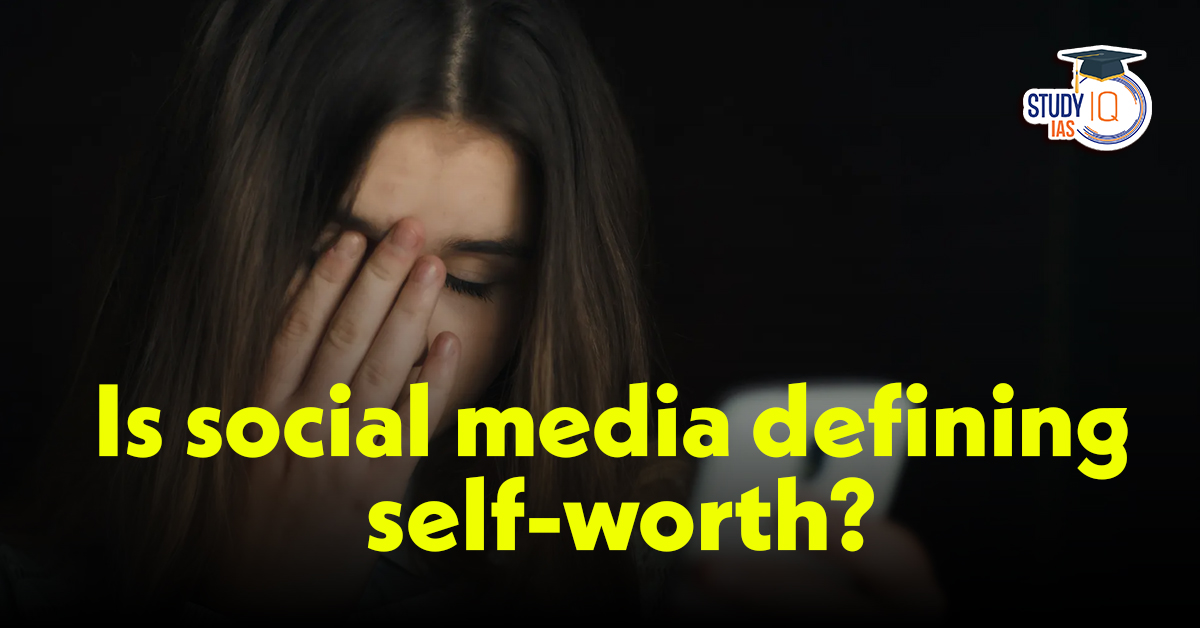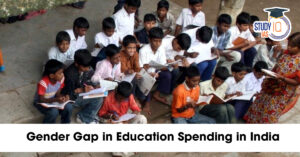Table of Contents
Context: Social media’s pervasive influence on self-worth, especially among youth, is a growing concern in India and globally
Current Usage Trends in India
- India’s digital landscape has grown dramatically. As of early 2024 there were roughly 462 million social media users in India (about 32% of the population).
- In total, 886 million Indians (≈58% of the population) were internet users by end-2024. Notably, 55% of internet users now live in rural areas, reflecting rapid rural adoption.
- Smartphones dominate access: Indians spend on average about 2h 28m daily on social apps and nearly 3h 57m on mobile internet.
- Popular platforms include YouTube and Facebook (hundreds of millions of users) and fast-growing Instagram (over 360 million users by 2024).
Challenges Associated
Curated perfection
Influencers project “curated perfection” (flawlessly styled lives) that many viewers internalize.
- Eg., the popular “morning routine” genre features one fitness influencer’s 3:52 AM routine (including journaling, ice baths, mouth-taping, etc.) went viral with 668 million views, but was widely mocked as “unrealistic”.
- This reflects how social media can set absurd benchmarks: young users see content emphasizing aesthetic results (low body fat, perfect schedules) and compare themselves unfavorably.
Algorithmic echo chambers
Platforms tend to show users more of what they interact with (e.g., a diet video-watcher will see more weight-loss tips).
- This creates filter bubbles of idealized content.
- Eg., In India’s context, some analysts observe that leading influencers mostly come from urban, upper-class backgrounds and promote a homogenized “modern” lifestyle.
- Those images of luxury and success (designer clothes, exotic travel, skinny bodies) can feel out of reach to average teens, reinforcing feelings of relative deprivation.
Influencer impact
The “looking-glass self” effect is strong: youths absorb feedback from online peers and stars.
- A Bengaluru child psychologist notes that identities are increasingly tied to physical appeal online – e.g. gym bodies are seen as solutions to emotional problems.
- When influencers showcase quick “fixes” (fitness hacks, diet plans) and glamorous outcomes, impressionable young followers may tie their self-worth to achieving similar results.
Mental Health Effects
- A survey of Indian adolescents found that many Indian adolescents and young adults experience heightened anxiety, depression, and low self-esteem linked to social media pressures, including the fear of missing out (FOMO) and compulsive checking.
- Participants also reported sleep disruptions.
- Body image issues are prevalent among Indian youth who are exposed to filtered and seemingly perfect bodies and lifestyles online, setting unattainable standards.
- A 2025 review of Instagram use indicated that teenagers who are exposed to polished “ideal” images online often experience body dissatisfaction and reduced self-worth.
- Teenage girls often experience this more acutely, spending more time editing photos and reporting higher levels of social media anxiety compared to boys.
- Over 65% of Indian teens report feeling inadequate when comparing themselves to influencers or peers online.
- Clinicians in India caution that these issues are amplified by the design of social media platforms, such as constant notifications and endless feeds, as well as the tendency for social comparison.
| Illustrative Cases and Events |
|
Mitigation Strategies and Solutions
- Platform-level interventions: Social media companies can be nudged to redesign features that drive comparison.
- For example, experimenting with hiding “like” counts and adding screen-time reminders has been proposed.
- Parental engagement: Open family communication is key.
- Rather than strict spying on kids’ phones, parents are encouraged to talk openly about online content.
- Guides like the Hyderabad Police’s “Digital Parenting” advise setting clear but fair rules (e.g. no phones at dinner, limits on nighttime use) and explaining the reasons behind them.
- School and community programs: Educators can incorporate digital literacy and emotional resilience into the curriculum.
- Introducing “digital detox” periods (phone-free classes or device drop-off) has shown benefits: Indian schools that banned phones report better attention spans.
- Counselors and peer-support groups (Social & Emotional Learning programs) help students process online stress and build offline friendships.
- Content creation norms: Influencers and users alike can shift culture by promoting authenticity.
- Campaigns emphasizing body positivity and media literacy (e.g. National campaigns, NGOs) aim to teach youth that online images are often misleading.
- Professional support: Teenagers showing signs of anxiety or depression should be connected to mental health services.
- Child psychologists urge schools to have counselors on staff.
- Some experts have called for training “influencer-coaches” – much like sports coaches – to guide content creators on psychological well-being.


 Geo-tagging of Buildings During Upcoming...
Geo-tagging of Buildings During Upcoming...
 Gender Gap in Educational Expenditure in...
Gender Gap in Educational Expenditure in...
 Reservation and 50% Cap: Constitutional ...
Reservation and 50% Cap: Constitutional ...

























